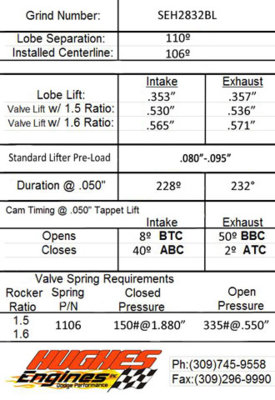JohnEngland
Well-Known Member
AndyF is there a book for finding the right timing curve. Kinda new at the game and just built a 470 with procomp heads and I believe the timing may be a culprit. The hughes cam (see attached cam card), Running 1.6 adjustable rockers with a qft 870 vac sec carb with a edelbrock rpm dual plane any help is greatly appreciated. Thanks in Advance. My current timing it 15 degrees at idle and 35 total all in at 2800rpms. i do have vac hooked up to distributor. also.

















